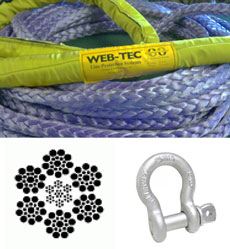What is the end goal of sling inspection? Simply put, it is meant to evaluate what remaining strength is left in a sling that has been previously used. The point is to determine if the rope is still suitable for use. Without inspecting ropes daily, you run the risk of causing an accident that could hurt people and even potentially cause death. What would happen to your company if a rope snapped while carrying products on your factory floor?

Daily visual inspections are mandatory for synthetic ropes, for wire ropes, and for Veropes. Before putting the ropes to work in the morning, they should be visually inspected by someone that is trained to notice problems and imperfections. That person is looking for weak points and areas of compromised integrity.
Again, the point of inspections is to keep people and merchandise safe. If you notice any of the below problems, you should pull your rope from service, or else you run the risk of an accident. Do you notice:
- Illegible and/or missing sling identification information. All ropes need identification information to be readily available. The same goes for synthetic slings, like nylon slings.
- Any cuts, tears, abrasions, or fiber breakage along the length of the rope require ropes to be pulled from service.
- The diameter of the rope has shrunk by more than 10% of its original size
- Fiber breaks inside the rope or fused/melted ropes
- Stiffness and discoloration, which indicate damage from UV rays, heat, or chemicals.
- Dirt buildup inside and outside of the rope that is deemed excessive.
Never use a broken or breaking rope. If you think your rope has issues, pull it anyway to be safe.
Related Reading Wire Rope